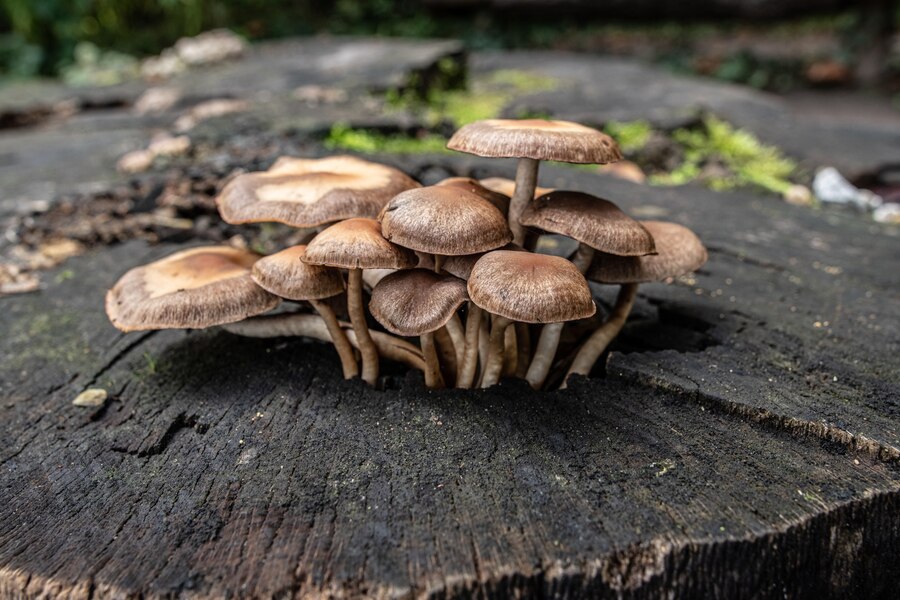Mushrooms, those fascinating fungi that pop up in forests, meadows, and even our own backyards, are an attention-seeking lot in the world of biology. Their diverse shapes, colors, and sizes make them a captivating subject for both amateur foragers and seasoned mycologists. Among these captivating fungi, the mushrooms with gills stand out as the flamenco dancers of the fungal kingdom, performing a delicate and intricate dance in their unique habitat. In this article, we will explore the world of mushrooms with gills and the captivating story they tell.
The Dance of Fungi: Why Mushrooms with Gills Steal the Show
Mushrooms are the fruiting bodies of certain fungi, serving as a reproductive structure for the organism. Among the various types of mushrooms, those with gills are particularly fascinating. They belong to the agaric family, which includes some of the most iconic and recognizable mushrooms, such as the common white button mushroom (Agaricus bisporus) and the eye-catching fly agaric (Amanita muscaria) with its bright red cap and white spots.
What sets mushrooms with gills apart is their intricate, often beautiful, and functional gill structure. These gills, located on the underside of the mushroom cap, are like the delicate folds of a ballroom dancer’s skirt. But their purpose is far more practical than aesthetic. These gills play a vital role in the mushroom’s lifecycle, enabling it to release and disperse its spores efficiently.
Spore Production: A Fungi’s Flamenco Performance
The gills of mushrooms are not just for show. They are designed to maximize spore production and dispersal. When the mushroom is mature, it releases millions of tiny spores from the gills. These spores are like the seeds of the mushroom kingdom, and their release is critical for reproduction.
As the spores fall from the gills, they are carried by air currents to new locations where they can potentially grow into new fungi. It’s a flamenco performance of nature, with each spore gracefully dancing on the breeze, hoping to find fertile ground to establish a new mushroom.
Mushroom Gills: A Feast for the Senses
Mushrooms with gills offer more than just a visual spectacle; they also engage our other senses. Their scent can range from earthy and nutty to pungent and spicy, and it can be an integral part of the overall mushroom hunting experience. Some even release an aroma that lures insects to help disperse their spores.
In addition to their scent, mushrooms with gills come in a stunning variety of colors, shapes, and sizes. Foragers and nature enthusiasts are often drawn to these fungi for their diverse and attention-grabbing appearances. Whether it’s the vibrant reds of the Amanita muscaria or the delicate ivory of the enoki mushroom (Flammulina velutipes), they never fail to steal the spotlight in the natural world.
A Warning for Attention-Seekers: Some Gilled Mushrooms Are Toxic
While many gilled mushrooms are harmless and even delectable, some are extremely toxic. It’s crucial to exercise caution and, ideally, consult with an experienced mycologist or rely on expert field guides when foraging for mushrooms with gills. Mistaking a toxic species for an edible one can have severe consequences, and nature’s flamenco can turn into a tragedy if you’re not careful.
Conclusion: The Enigmatic Beauty of Mushroom Gills
Mushrooms with gills are the enchanting flamenco dancers of the fungal kingdom, captivating us with their intricate structures, stunning colors, and vital role in nature’s grand performance. Whether you’re an amateur mushroom hunter or an ardent mycophile, these fungi are sure to steal your attention with their alluring dance. Just remember, when it comes to foraging, it’s essential to take safety seriously and ensure you can fully appreciate the beauty of these remarkable organisms without risk. So, the next time you find yourself in a forest or meadow, keep an eye out for these attention-seeking fungi, and you may just witness a mesmerizing performance in the world of mushrooms with gills.


